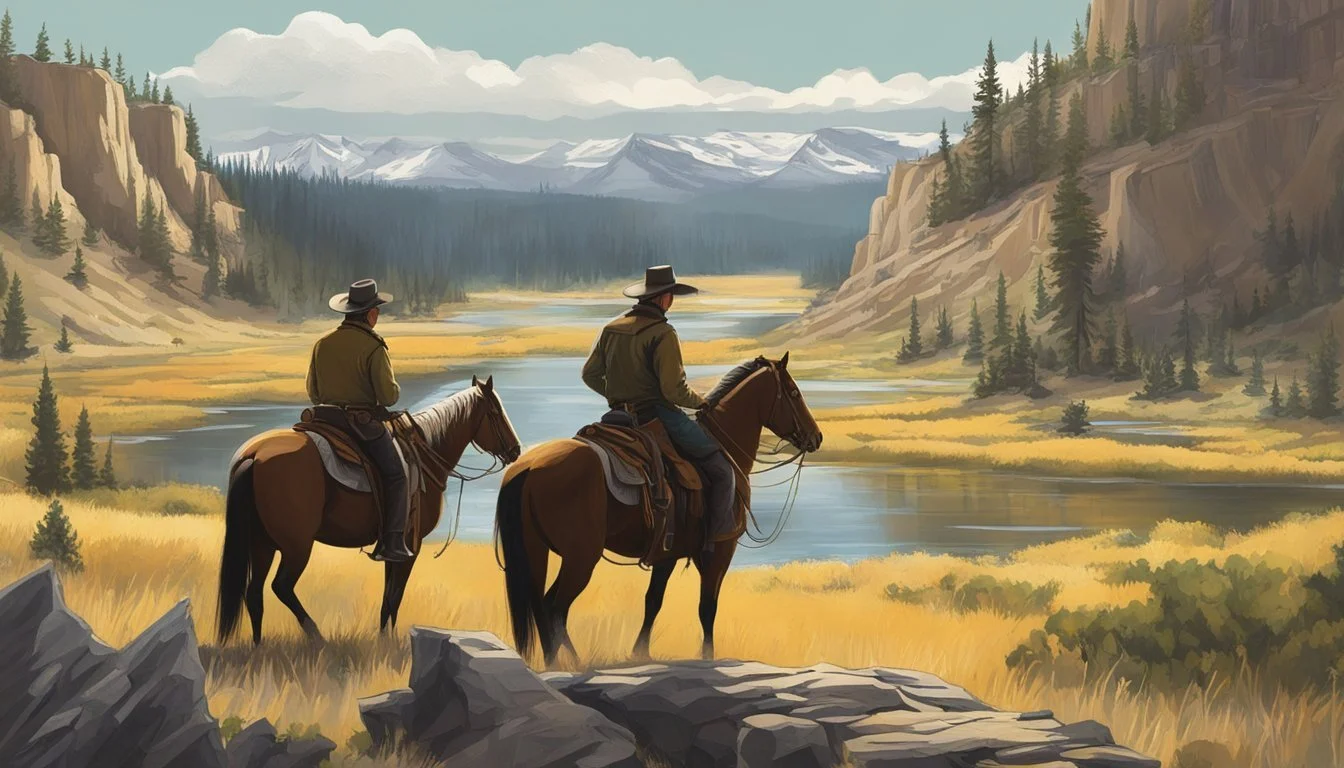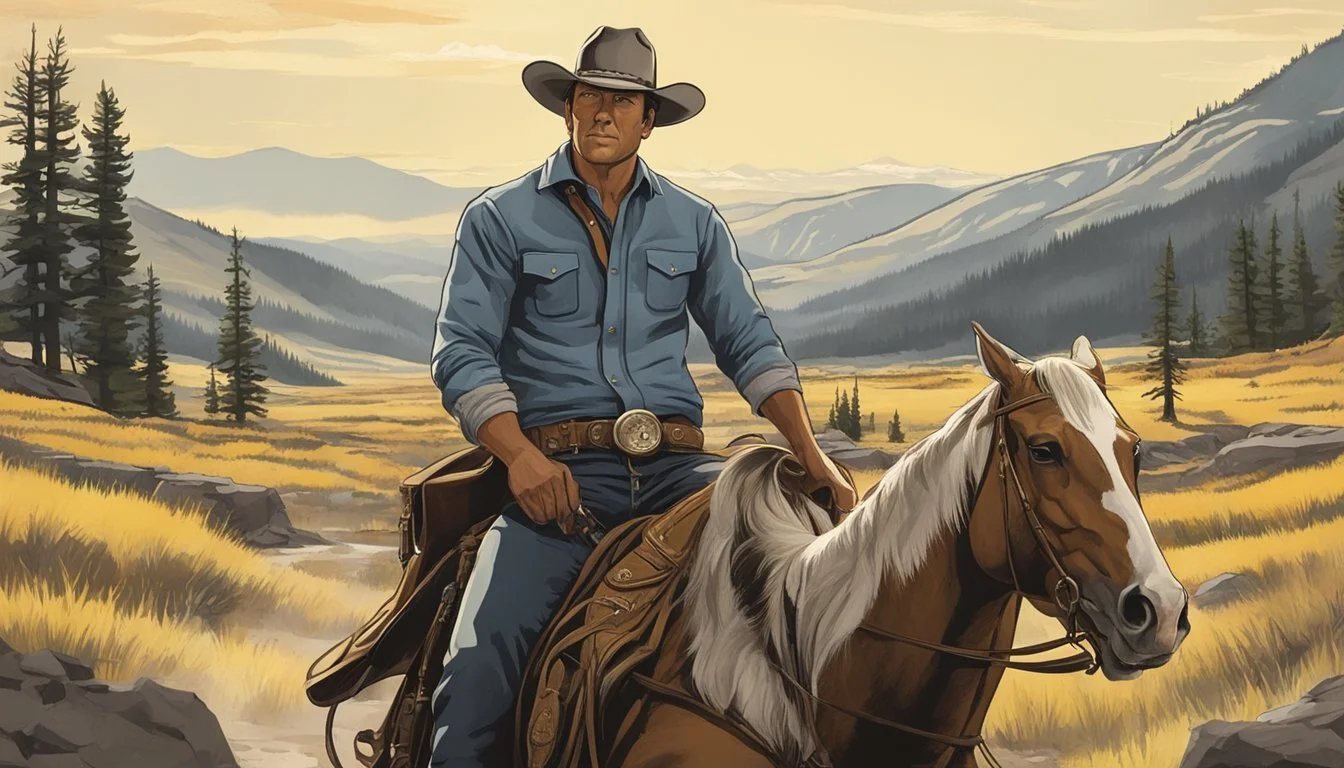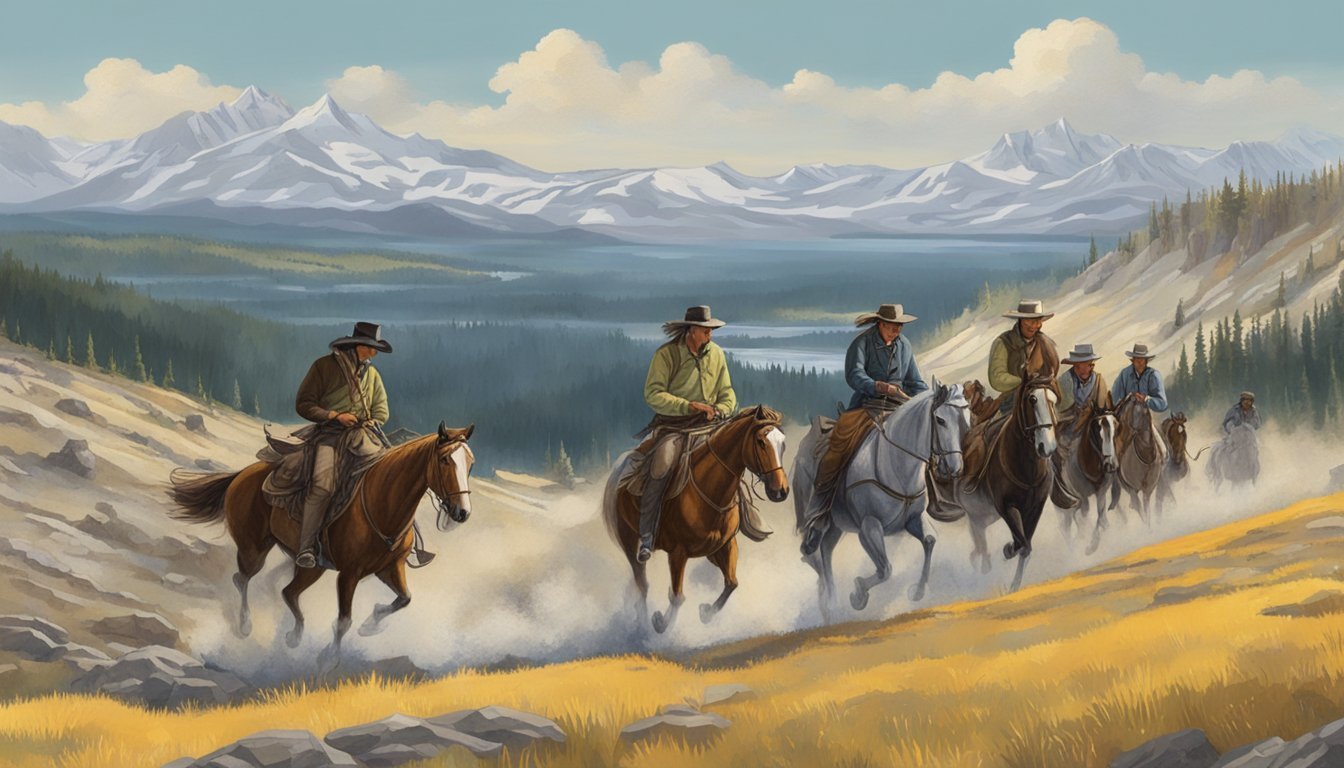Yellowstone's Bold Stand on Environmental Issues Ignites Controversy and Debate
Yellowstone, the popular television series, has captivated audiences with its portrayal of the American West. The show's depiction of environmental challenges faced by ranchers and local communities has sparked discussions about land conservation and wildlife management. Yellowstone's environmental messaging resonates with conservative viewers by emphasizing traditional stewardship values.
The series tackles issues like property rights, land management, and the delicate balance between ranching practices and ecological concerns. These themes serve as a backdrop to the main plot, adding depth and relevance to the story. Yellowstone's authentic representation of rural life and the struggles of maintaining family-owned ranches has struck a chord with viewers across America.
By weaving environmental themes throughout its narrative, Yellowstone has raised awareness about the complexities of conservation in the American West. The show's portrayal of these issues has influenced audience perceptions and sparked conversations about sustainable land use practices. This unique blend of entertainment and education has made Yellowstone a powerful platform for discussing environmental stewardship from a conservative perspective.
Historical Context of Yellowstone National Park
Yellowstone National Park's establishment marked a pivotal moment in American conservation history. Its creation reflected changing attitudes towards land use and preservation in the expanding American West.
Establishment and Significance
Yellowstone became the world's first national park on March 1, 1872. President Ulysses S. Grant signed legislation setting aside over 2 million acres as a public park. This groundbreaking act aimed to preserve the area's natural wonders for future generations.
The park's creation set a precedent for conservation efforts worldwide. It introduced the concept of protecting large areas of wilderness for public enjoyment and scientific study.
Yellowstone's unique geological features, including geysers and hot springs, played a crucial role in its designation as a protected area. These natural wonders attracted early explorers and helped build support for the park's establishment.
Changing Landscape of the American West
The mid-19th century saw rapid westward expansion in the United States. This period was characterized by resource exploitation, settlement, and development of previously undisturbed lands.
As settlers moved into Montana and surrounding territories, concerns grew about the preservation of unique natural areas. Yellowstone's establishment reflected a shift in thinking about land use and conservation.
The park's creation challenged prevailing attitudes that viewed wilderness as a resource to be conquered and exploited. It introduced the idea that some landscapes were worth preserving in their natural state.
From Land Use to Land Preservation
Yellowstone's designation marked a transition from unrestricted land use to managed preservation. This shift reflected growing awareness of the environmental impacts of unchecked development.
The park's creation established a model for balancing human access with ecosystem protection. It introduced the concept of "public parks" managed for both conservation and recreation.
Yellowstone's establishment influenced future conservation efforts across the American West. It paved the way for the creation of additional national parks and protected areas throughout the United States and beyond.
Environmental Stewardship in Yellowstone
Yellowstone's environmental stewardship blends traditional ranching values with modern conservation efforts. The show portrays complex interactions between land use, preservation, and cultural heritage.
Principles of Conservation
Yellowstone National Park embodies core principles of environmental conservation. The park's sustainability program emphasizes responsible resource management and minimizing operational impacts. Park officials work to balance preservation with public access and education.
The show depicts tensions between different conservation approaches. Some characters advocate for strict preservation, while others promote sustainable use of natural resources. This reflects real-world debates about best practices for protecting Yellowstone's unique ecosystem.
Park policies aim to safeguard wildlife, protect geothermal features, and maintain air and water quality. Rangers and scientists monitor environmental indicators and adapt management strategies accordingly.
John Dutton and the Dutton Family: A Symbolic Narrative
John Dutton represents a traditional ranching ethos of land stewardship. His character embodies conservative values of self-reliance and respect for nature. The Dutton family's multi-generational connection to their ranch symbolizes deep ties to the land.
John's approach often clashes with outside developers and government regulators. He views his ranching practices as a form of conservation, preserving open spaces and wildlife habitat. This perspective resonates with many real-world ranchers in the American West.
The show explores conflicts between the Duttons' private land management and public land policies. These storylines reflect ongoing debates about property rights and environmental regulations in the region.
Engagement of Native American Characters
Native American characters in Yellowstone offer important perspectives on environmental stewardship. Their traditional ecological knowledge provides a counterpoint to Western scientific approaches.
The show depicts Indigenous characters advocating for land rights and resource protection. These storylines touch on real issues of tribal sovereignty and sacred site preservation in the Yellowstone area.
Native characters often emphasize long-term, holistic views of ecosystem health. This contrasts with more short-term economic considerations of other stakeholders. Their involvement adds depth to the show's exploration of environmental ethics and sustainable practices.
Wildlife Management and Ecosystem Health
Yellowstone National Park's approach to wildlife management focuses on maintaining ecological balance and biodiversity. The park employs various strategies to protect native species while addressing challenges posed by invasive organisms and human impacts.
Wolf Reintroduction Program
The 1995 wolf reintroduction in Yellowstone marked a pivotal moment in ecosystem restoration. Wolves, as apex predators, play a crucial role in regulating prey populations and shaping the landscape.
Their presence has led to a trophic cascade, influencing elk behavior and distribution. This shift has allowed vegetation to recover in certain areas, benefiting various species like beavers and songbirds.
The program has also provided valuable data on predator-prey dynamics and ecosystem resilience. Researchers continue to monitor wolf populations and their impacts on the park's ecology.
Bison Management and Ecological Balance
Yellowstone's bison herds, numbering around 5,000 animals, are a key component of the park's ecosystem. Management efforts focus on maintaining a sustainable population while addressing concerns about disease transmission to domestic cattle.
The park uses adaptive management strategies, including:
Hazing operations to keep bison within park boundaries
Selective culling to control population size
Quarantine programs to certify disease-free bison for relocation
These efforts aim to balance conservation goals with the needs of surrounding communities and ranchers.
Invasive Species and Biodiversity Protection
Yellowstone faces ongoing challenges from non-native species that threaten native biodiversity. Park managers employ various techniques to combat these invaders:
Mechanical removal of invasive plants
Targeted use of herbicides in critical areas
Public education to prevent the spread of aquatic invasives
Lake trout in Yellowstone Lake pose a significant threat to native cutthroat trout. Intensive netting efforts have removed millions of lake trout, helping to protect this important native species.
The park also monitors for emerging threats, such as white-nose syndrome in bats and chronic wasting disease in elk and deer populations.
Legal and Ethical Dimensions of Land Ownership
Land ownership in Yellowstone involves complex legal and ethical considerations. Property rights, tribal sovereignty, and corporate interests intersect with environmental stewardship, creating a multifaceted landscape of competing claims and responsibilities.
Property Rights and Landowners
Private landowners within and around Yellowstone face unique challenges. Their property rights often conflict with conservation efforts and public access needs. Some ranchers have embraced conservation easements, voluntarily limiting land use to protect natural resources. These agreements preserve open spaces and wildlife habitats while allowing landowners to retain ownership.
Other property owners resist government regulations, viewing them as infringements on their rights. This tension has led to legal battles over issues like wolf reintroduction and bison management. Courts must balance individual property rights with broader environmental concerns.
Tribal Sovereignty and Native American Rights
Native American tribes hold special legal status in relation to Yellowstone. Treaties and federal laws recognize tribal sovereignty, granting tribes authority over their lands and resources. Several tribes have historical and cultural ties to the Yellowstone region.
The Crow, Blackfeet, and Shoshone-Bannock tribes, among others, maintain hunting and gathering rights in certain areas. These rights sometimes conflict with park regulations and conservation goals. Tribal involvement in park management has increased, incorporating traditional ecological knowledge into decision-making processes.
Corporate Greed vs. Environmental Ethics
Corporations play a significant role in Yellowstone's environmental landscape. Some companies have embraced corporate responsibility, implementing sustainable practices and supporting conservation efforts. Others prioritize profit over environmental protection.
Mining companies seek to exploit mineral resources near park boundaries, raising concerns about water pollution and habitat destruction. Tourism businesses must balance economic interests with preserving the natural beauty that attracts visitors.
Ethical debates arise over the commodification of nature. Should geothermal features be tapped for energy production? How much development is acceptable in gateway communities? These questions highlight the ongoing struggle between corporate interests and environmental ethics in the Yellowstone ecosystem.
Socioeconomic Impact and Community Relations
Yellowstone's presence shapes the economic landscape and social dynamics of surrounding areas. The park's influence extends beyond its boundaries, affecting local communities, industries, and development patterns.
Balancing Economic Development with Conservation
Yellowstone National Park generates significant economic activity in gateway communities. Tourism-related businesses like hotels, restaurants, and outfitters provide jobs and income. However, this economic boost comes with challenges.
Development pressures threaten open spaces and wildlife habitats near park borders. Local governments face tough choices between allowing growth and preserving natural areas. Some communities have implemented zoning laws to limit sprawl.
Conservation easements offer one approach to balance development and preservation. These agreements compensate landowners for keeping property undeveloped. Several non-profit land trusts work with ranchers and farmers to protect key parcels near Yellowstone.
Yellowstone's Relationship with Ranchers and Farmers
Ranching remains an important industry in areas surrounding Yellowstone. The park's wildlife, especially bison and wolves, sometimes conflict with agricultural operations.
Bison leaving the park can transmit brucellosis to cattle. This has led to controversial bison culling programs. Wolf predation on livestock is another source of tension. Compensation programs reimburse ranchers for losses, but debates continue over wolf management.
Some ranchers have found economic opportunities in wildlife tourism. Guided wildlife viewing and photography tours on private ranchlands provide supplemental income. These activities incentivize habitat conservation on working lands.
Impact of Tourism and Population Growth
Yellowstone attracts over 4 million annual visitors, driving economic growth but straining infrastructure. Popular areas face traffic congestion and overcrowding during peak seasons.
Gateway towns like West Yellowstone and Gardiner have seen rapid development to accommodate tourists. This growth brings jobs but also raises housing costs for local workers. Some long-time residents express concerns about changing community character.
The broader region is experiencing population growth as people relocate for Yellowstone's natural amenities. This influx spurs construction and service industries. It also increases demands on public services and contributes to rising real estate prices.
Cultural and Economic Challenges in Conservation
Yellowstone faces complex cultural and economic challenges in its conservation efforts. These issues intertwine with local communities, traditional values, and evolving socioeconomic dynamics.
The Fight against Eco-Terrorism and Land-Grabbing
Eco-terrorism poses a threat to Yellowstone's delicate ecosystems. Radical environmental groups have carried out acts of sabotage against development projects near the park. These actions, while intended to protect nature, often backfire and harm conservation efforts.
Land-grabbing by private interests also endangers Yellowstone's borders. Wealthy individuals and corporations attempt to purchase adjacent lands, potentially restricting wildlife corridors and public access. Park officials work diligently to counter these threats through legal means and strategic land acquisitions.
Gentrification and Displacement Challenges
The popularity of Yellowstone has led to gentrification in nearby communities. Affluent outsiders buy property, driving up real estate prices. This trend forces long-time residents out of their homes and changes the area's socioeconomic landscape.
Local businesses struggle to compete with new upscale establishments catering to tourists. The influx of wealth creates a divide between newcomers and multi-generational residents. This tension complicates conservation efforts, as community support is crucial for effective environmental stewardship.
Preservation of Cultural Heritage and Traditional Values
Yellowstone's conservation mission extends beyond nature to include cultural preservation. Native American tribes have deep historical ties to the land, and their traditional practices often conflict with modern park management policies.
Ranching communities surrounding Yellowstone face pressure to abandon traditional land use methods. Conservation initiatives sometimes clash with longstanding agricultural practices. Park managers strive to balance ecological goals with respect for local heritage and livelihoods.
Efforts to maintain authenticity in the face of commercialization present ongoing challenges. Yellowstone must navigate the fine line between providing visitor amenities and preserving the park's rugged character.
Yellowstone's Global Significance
Yellowstone National Park stands as a beacon of conservation and environmental stewardship worldwide. Its unique ecosystems and management practices serve as a model for protected areas globally.
A World Heritage Site's Conservation Model
Yellowstone earned its UNESCO World Heritage Site status in 1978, recognizing its exceptional natural beauty and geological significance. The park's diverse ecosystems, including geothermal features, forests, and wildlife habitats, make it a living laboratory for conservation efforts.
The National Park Service implements cutting-edge preservation techniques in Yellowstone. These methods include wildlife management, fire ecology, and invasive species control. Other protected areas around the world often look to Yellowstone's strategies as benchmarks for their own conservation programs.
Yellowstone Forever, the park's official nonprofit partner, supports various research and preservation initiatives. Their work contributes to the park's role as a global leader in ecosystem management and conservation science.
Visitor Education and Worldwide Conservation Influence
Yellowstone's visitor education programs reach millions of people annually, fostering a global community of conservation advocates. The park's interpretive rangers and educational materials inspire visitors to become stewards of nature in their own communities.
Interactive exhibits and guided tours showcase the park's unique features and ongoing conservation challenges. These experiences encourage visitors to consider environmental issues on a broader scale.
Yellowstone's influence extends beyond its boundaries through international partnerships and knowledge sharing. Park scientists and managers frequently collaborate with counterparts from other countries, exchanging best practices in protected area management.
The park's success in balancing conservation with public access serves as a model for developing nations establishing their own national park systems. Yellowstone's legacy continues to shape global attitudes towards nature preservation and sustainable tourism.





